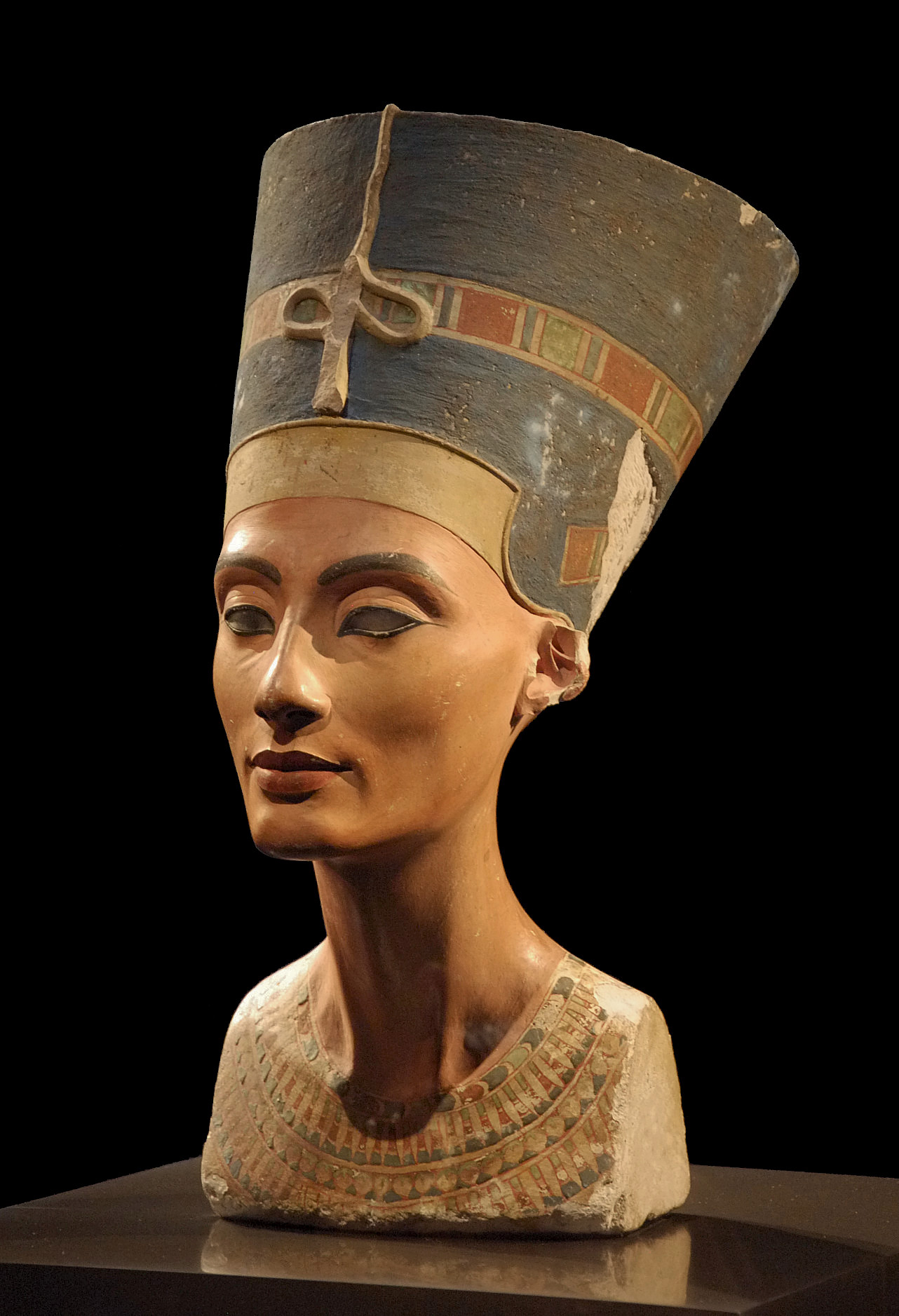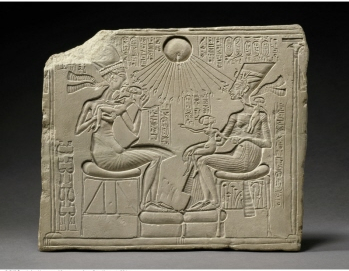Nefertiti: Egyptian Wife, Mother, Queen and Icon
Neferneferuaten Nefertiti was the great royal wife of King Akhenaten and, in contemporary Western culture, is perhaps ancient Egypt’s most famous queen – as the iconic bust in the Berlin Museum evinces. She and Akhenaten produced six daughters, a female royal contingent that enjoyed unusual prominence during Akhenaten’s reign. In fact, Nefertiti holds the position as the Egyptian queen with the most surviving appearances on monuments and other artistic mediums.
During his reign, Akhenaten enacted a series of shocking religious and societal changes that re-centered the Egyptian pantheon around a formerly peripheral god: the Aten. This political move most likely created a place of prominence for Nefertiti within official mediums. To cement the pharaoh’s societal changes, greater authority was placed on the royal family – a decision in which Nefertiti’s influence was continually emphasized. As a result, Nefertiti is frequently shown making offerings to the Aten without her husband, suggesting that she possessed an unusual level of autonomy in the Egyptian court. Images even show Nefertiti smiting the enemies of Egypt – a motif previously reserved only for the pharaoh.
In addition to being used as an authority figure within her husband’s new iconographic program, depictions of Nefertiti were used to embody several important principles of the religious reforms centered on the Aten. The main tenants of the new Amarna religion were laid out in the Great Hymn to the Aten, a text that discusses the role of the solar disk in providing earth’s occupants with life and sustenance. One principle emphasized throughout the Great Hymn to the Aten is the concept of fertility and the generation of new life, an idea often mirrored in the art of the Amarna period. For instance, both men and women were depicted with large stomachs and thighs in what appears to have been an effort to call to mind gods of fecundity, such as Hapy.
In a shrine stela now in the Berlin Museum, Akhenaten and Nefertiti are seated facing one another with the Aten shining down above them. Akhenaten holds one of the couple’s daughters in his arms and kisses her on the lips, while Nefertiti sits with one of her daughters on her knee and the other perched on her shoulder reaching playfully for her mother’s earrings. In this scene, Nefertiti is only slightly smaller than her husband in a way that suggests the natural dimorphism of the sexes rather than a hierarchical scale. In addition, the facial features, dress and posture of the royal couple are remarkably similar. They both wear headgear of similar shapes, with Nefertiti wearing her typical flat topped crown and Akhenaten wearing what appears to be his blue crown (the stela is damaged). Finally, the Aten holds two ankh symbols to the noses of the king and the queen, suggesting that even in the eyes of the Aten, Akhenaten and Nefertiti were analogous.
All of these parallels in depictions of the king and queen seem to reflect their complementary nature. As stated in the Great Hymn, the king was intended to function as the intermediary for the Aten on earth, which suggests Nefertiti was his female equivalent in this role. This idea is bolstered by the fact this stela was a shrine in a private house, implying that citizens of Amarna were meant to worship the entire royal family and not just the king.
Nefertiti may have maintained a position of influence even after her husband’s death. Many scholars suggest she even was one of Akhenaten’s successors and reigned under the name Neferneferuaten. Between Akhenaten’s last year on the throne and the time that Tutankhamun became pharaoh, we know two distinct kings briefly reigned under the names of Neferneferuaten and Smenkhkare. Confusingly, these two kings shared the same prenomen when Nefeneferuaten’s was abbreviated, which led scholars initially to believe they were the same person. However, consensus now holds that Neferneferuaten was not the same person as Smenkhkare and that she actually was a female pharaoh based on the feminine endings on some of her epithets and the feminine spelling of her prenomen. Early on, scholars suspected Nefertiti and Neferneferuaten were the same person because Nefertiti used the name Neferneferuaten when she was queen. This theory was further supported in 2012 when the Leuven Archaeological Mission discovered a graffito at Deir el Bersha naming Nefertiti as Akhenaten’s chief queen. This inscription dates to Akhenaten’s regnal year 16, which was his second to last year on the throne. This text indicates Nefertiti was alive late into her husband’s kingship and could have been in a position to succeed him. However, even if Nefertiti did not reign as a king, she undoubtedly remains one of ancient Egypt’s most famous queens.
Recommended Reading
Arnold, Dorothea 1996. The royal women of Amarna: images of beauty from ancient Egypt. New York: Metropolitan Museum of Art.
Cooney, Kara 2018. When Women Ruled the World: Six Queens of Egypt. Washington D.C.: National Geographic Society.
Tyldesley, Joyce A. 1999. Nefertiti: Egypt’s Sun Queen. New York: Viking.

